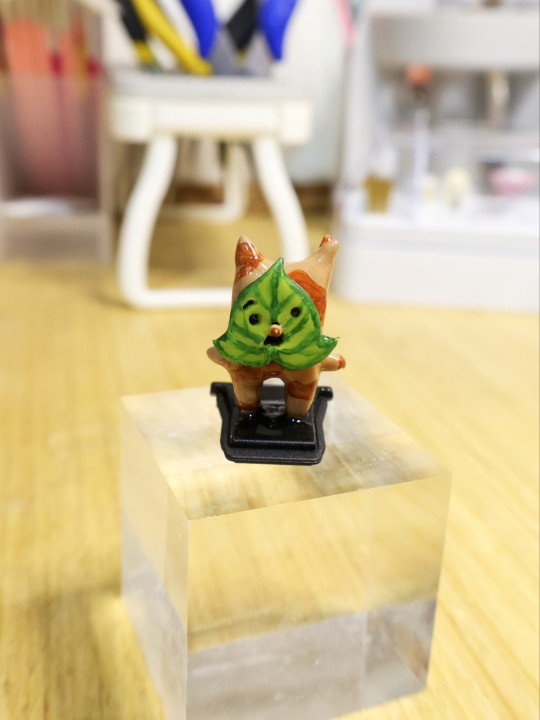#Leather Testing
Explore tagged Tumblr posts
Text
The Importance of Semi Finished Leather Testing in Footwear Manufacturing
In the footwear industry, material quality is paramount. Footwear manufacturers rely heavily on leather as a core material for comfort, durability, and style. However, not all leather is created equal. To produce high-quality shoes that meet customer expectations and regulatory standards, manufacturers must carefully evaluate the raw materials used. This is where Semi Finished Leather Testing becomes crucial.
Semi finished leather undergoes preliminary processing but isn’t yet in its final form. Testing at this stage helps manufacturers detect potential issues early, ensuring the leather meets the necessary standards for performance and safety. This blog explores the vital role of semi finished leather testing in footwear manufacturing and how it benefits the entire production process.
What Is Semi Finished Leather?
Semi finished leather is leather that has been tanned and dyed but has not yet received its final surface treatment or finishing. At this stage, the leather's fundamental properties—such as flexibility, thickness, and chemical composition—are measurable and can be controlled.
Manufacturers need to assess semi finished leather carefully before proceeding to the finishing and assembly stages. This ensures the leather is suitable for the demands of footwear applications.
Why Is Semi Finished Leather Testing Essential in Footwear Manufacturing?
The quality of leather used directly influences a shoe's comfort, durability, appearance, and safety. Here are key reasons why semi finished leather testing is essential in footwear manufacturing:
1. Ensuring Durability and Performance
Footwear leather must endure constant wear, bending, moisture, and abrasion. Testing semi finished leather assesses its:
Tensile strength: To ensure it can withstand stretching and pulling without tearing.
Flexibility: To confirm the leather can bend without cracking or losing integrity.
Abrasion resistance: To verify the leather’s ability to resist surface wear from friction.
These tests help manufacturers select leather that will perform reliably throughout the shoe’s lifespan, reducing defects and enhancing consumer satisfaction.
2. Verifying Chemical Safety Compliance
Leather tanning and dyeing involve chemicals, some of which can be harmful or regulated. For footwear, chemical safety is especially critical since shoes come into close contact with the skin.
Semi finished leather testing identifies:
Harmful substances like chromium VI, a carcinogen often found in leather tanning.
Formaldehyde, phthalates, and heavy metals that can cause allergic reactions or toxicity.
Compliance with international regulations such as REACH (EU) and CPSIA (US), which restrict hazardous chemicals in consumer products.
Testing guarantees that the leather meets these chemical safety standards, protecting consumer health and avoiding regulatory penalties.
3. Enhancing Product Quality Control
Testing at the semi finished leather stage allows footwear manufacturers to catch defects early—before final assembly and finishing. Common issues detected include:
Uneven thickness or density that affects shoe fit and comfort.
Color inconsistency that affects aesthetic appeal.
Presence of weak spots or structural flaws that reduce durability.
Addressing these issues early reduces waste, improves yield, and ensures only premium leather moves forward in production.
4. Supporting Compliance with International Export Standards
Footwear manufacturers aiming to export must comply with strict standards in key markets like the EU, US, and Japan. Semi finished leather testing is critical for:
Meeting REACH chemical limits on restricted substances.
Fulfilling California Proposition 65 warning requirements.
Passing import inspections and retailer quality checks.
By documenting test results from accredited labs, manufacturers streamline customs clearance and retailer approvals, facilitating smoother global market access.
5. Promoting Sustainability and Corporate Responsibility
Modern consumers and retailers demand sustainable, ethically sourced footwear. Semi finished leather testing helps manufacturers:
Detect banned substances harmful to the environment.
Verify compliance with eco-labels or green certifications.
Demonstrate transparency in the supply chain.
These factors boost brand reputation and align with sustainability goals increasingly prioritized in the fashion and footwear industries.
6. Reducing Costs Through Early Defect Identification
Discovering leather defects or compliance failures after production is costly. It leads to:
Expensive product recalls or reworks.
Delays in shipment and lost sales.
Damage to brand image and consumer trust.
Semi finished leather testing minimizes these risks by allowing manufacturers to reject or reprocess substandard leather early, saving money and protecting the brand’s reputation.
Key Tests Conducted on Semi Finished Leather in Footwear Manufacturing
To ensure leather is suitable for footwear, manufacturers typically require a range of physical and chemical tests, including:
Tensile Strength Test: Measures the force required to break the leather.
Flexibility Test: Evaluates the leather’s ability to bend repeatedly without cracking.
Abrasion Resistance Test: Simulates wear and tear during use.
Chromium VI Content Test: Detects toxic chromium residues.
Formaldehyde and Phthalates Screening: Checks for toxic chemicals.
Colorfastness Test: Assesses the leather’s resistance to color fading or bleeding.
Thickness and Density Measurement: Ensures consistency for manufacturing.
These tests are usually performed in ISO 17025 accredited laboratories to guarantee accuracy and international acceptance.
How Footwear Manufacturers Can Implement Semi Finished Leather Testing
Collaborate with Accredited Testing Labs
Manufacturers should partner with ISO-certified labs experienced in leather testing to ensure reliable and standardized results.
Specify Testing Requirements Based on End-Use
Different shoe types (e.g., athletic, formal, casual) may require specific leather properties. Testing protocols should be customized accordingly.
Integrate Testing Early in the Supply Chain
Testing should occur immediately after tanning and dyeing, before the finishing process begins.
Use Test Data for Continuous Improvement
Manufacturers can analyze results to work with suppliers on improving leather quality and consistency over time.
Conclusion
For footwear manufacturers, Semi Finished Leather Testing is more than a regulatory obligation—it is a vital quality assurance step that impacts every aspect of the final product. From ensuring durability and safety to meeting global compliance standards and supporting sustainability, testing semi finished leather provides manufacturers with the confidence and data needed to create superior footwear.
By prioritizing rigorous leather testing, footwear brands can reduce production risks, enhance product performance, and build trust with consumers and retailers worldwide. In today’s demanding market, investing in semi finished leather testing is a strategic move that leads to long-term success and growth.
#semi finished leather testing#leather testing lab#leather testing#testing lab near me#testing lab in delhi
0 notes
Text

Leather Testing Lab | +971 554747210
0 notes
Text
The Importance Of Leather Testing For Quality Control
Leather is a material that is used in many industries, including furniture, automotive, aviation, fashion, and more. However, the type of animal hide, tanning method, and production procedures affect the product’s quality and longevity; thus, leather product testing is crucial to guarantee that the products meet industry standards and customer expectations.
0 notes
Text
The Significance of Leather Testing in Ensuring Quality Control
Leather is an incredibly versatile material used in various industries, including fashion, automotive, aviation, and furniture manufacturing. However, the quality and durability of leather can vary significantly based on factors such as animal hide type, tanning process, and manufacturing techniques. This is why leather testing is crucial for ensuring product quality and meeting industry standards and consumer expectations. In this blog, we will explore what leather testing entails as a form of quality control.
What Is Leather Testing?
Leather testing involves evaluating the physical and chemical properties of leather to assess its quality and performance. It encompasses a range of techniques, including chemical analysis, physical testing, and migration analysis. These tests provide valuable insights into the durability, strength, colorfastness, and wear resistance of leather products.
Why Is Leather Testing Essential for Quality Control?
Leather testing is essential for quality control because it ensures that leather products meet industry standards and consumer expectations. By conducting tests to identify potential quality issues before products are released to the market, manufacturers can proactively address any problems, potentially avoiding costly recalls and safeguarding their reputation.
Leather testing also helps manufacturers determine the most effective tanning processes and manufacturing techniques for different types of leather products. By conducting tests, they can identify the optimal tanning time and temperature to achieve the desired softness, color intensity, and durability for specific leather items.
Furthermore, leather testing plays a crucial role in identifying potential safety hazards associated with leather products. For instance, it can detect the presence of heavy metals that can be harmful to both humans and the environment. Migration analysis, a key component of leather testing, examines whether harmful substances from the leather migrate onto other materials or skin surfaces.
Leather Testing in the UAE
In the United Arab Emirates (UAE), testing laboratories offer comprehensive leather testing services, including METS Lab. At METS Lab, our experienced and qualified staff employs state-of-the-art equipment to provide reliable test results.
Our leather testing services in the UAE cover various aspects. Physical testing involves assessing leather's tensile strength, tear resistance, flexing endurance, and colorfastness to rubbing and light. Chemical analysis determines the composition, pH level, and fat content of the leather. Migration analysis evaluates heavy metal content and the migration of any harmful substances onto other materials or skin surfaces.
Conclusion
Leather testing is a critical aspect of quality control in the leather industry, ensuring compliance with industry standards and meeting consumer expectations for durability, safety, and performance. In the UAE, METS Lab offers comprehensive leather testing services, including physical testing, chemical analysis, and migration analysis. We prioritize customer support to cater to individual needs and ensure thorough evaluation of all leather products for quality and safety testing.
0 notes
Text






leatherdykery
is the shirt better buttoned or unbuttoned? i can't decide
#dont mind me trying to do some range of motion testing in the new trousers lol#i was intrigued by the leather scene as a baby dyke but didnt have the confidence to explore it#but not anymore baybee!#i'm hoping theres an event at my countys pride later this year#or i'll travel idc#if youre considering trying leather DO IT#ok anyways now time for boring tags#mr. riegillio#leather#leather dyke#leatherdyke#butch#dyke#masc#lesbian#nonbinary#transmasc#boydyke#butch bait#dykefag#dykeposting#t4t#butch4butch#masc4masc#butch lesbian#masc lesbian#i wanna be a twunk
113 notes
·
View notes
Text
The motogp website gave us more transparent pngs to play barbies with since they needed place holders until next year!
I'm stashing these here before they change them 😚✌️






















(Some of them aren't new, but it felt weird to not put the whole grid)
#i can't be the only one who sees a transparent png and then immediately heads to photoshop to make memes#i still have all of last years ones on my harddrive if anyone ever needs those 👍#so sad they didn't take pictures of everyone's test leathers tho#like miguel and pecco looked. so good.#motogp#not museum tag#motogp pngs
139 notes
·
View notes
Text
thinking about that one interview where lando norris says he wears four of the most basic man colognes at once. why does he do this. how does he not give everyone around him a major headache. what is the thought process behind this.
#not a tag#from saph#i think brad and i will need to field test this theory he is also shocked and befuddled#this is what inspired my cologne post a few days ago#f1#just WHY#WHO told you it was a good idea to wear dior sauvage AND ombré leather AT THE SAME TIME#WHOOO#i want to have a long conversation with them#or study them like a scientist
601 notes
·
View notes
Text
The Role of Semi Finished Leather Testing in EU and US Market Access
Entering the lucrative markets of the European Union (EU) and the United States (US) is a major goal for leather manufacturers worldwide. However, both regions enforce stringent regulatory standards designed to ensure consumer safety, environmental protection, and product quality. For leather producers, especially those dealing with semi finished leather, adhering to these regulations is non-negotiable.
One critical aspect of gaining market access in these regions is Semi Finished Leather Testing—a series of chemical and physical analyses conducted at the intermediate stage of leather processing. This blog explores why this testing is vital for compliance, what standards must be met, and how it facilitates successful entry into the EU and US markets.
Understanding Semi Finished Leather and Its Testing
Before diving into regulatory requirements, it’s essential to understand what semi finished leather is. This is leather that has undergone primary processing like tanning and dyeing but has not yet received its final finish or treatment.
Semi Finished Leather Testing involves evaluating the material’s chemical composition and physical properties to ensure it complies with health, safety, and environmental standards.
Testing at this stage helps identify and address potential issues early, avoiding costly recalls or shipment rejections once the leather is converted into final products.
Why Is Semi Finished Leather Testing Important for EU Market Access?
The European Union is known for its comprehensive regulatory framework concerning consumer products, including leather goods. Several regulations require proof of safety and compliance before products can be sold within the EU.
1. REACH Compliance
REACH (Registration, Evaluation, Authorization and Restriction of Chemicals) is the cornerstone of EU chemical safety legislation. It controls the use of substances in leather production such as:
Chromium VI (a toxic heavy metal often used in tanning)
Formaldehyde
Azo dyes that can break down into carcinogenic aromatic amines
Phthalates and other restricted chemicals
Semi Finished Leather Testing is essential to confirm that the levels of these chemicals are within the strict limits defined by REACH. Without proper testing and certification, manufacturers cannot prove compliance, risking shipment refusals at EU borders.
2. EU Toy Safety Directive
Leather used in children’s products in the EU must meet specific safety standards, including limits on heavy metals and other harmful chemicals. Semi finished leather testing ensures these materials are safe before they reach manufacturers of toys or children’s footwear.
3. Eco-Labeling and Sustainability Initiatives
Many brands and retailers in the EU also require evidence that leather products meet environmental standards. Testing semi finished leather for restricted chemicals supports these goals and facilitates obtaining eco-labels like the EU Ecolabel.
The Role of Semi Finished Leather Testing for US Market Access
The US market has equally stringent regulations, often differing slightly from the EU but equally demanding in consumer safety and environmental protection.
1. CPSIA and Heavy Metals Limits
The Consumer Product Safety Improvement Act (CPSIA) regulates the presence of lead, cadmium, and phthalates in children’s products, including leather footwear and accessories. Semi finished leather testing identifies any hazardous substances early, ensuring materials used in children’s products comply with CPSIA limits.
2. California Proposition 65
This California regulation requires warnings for products containing chemicals known to cause cancer or reproductive harm. Testing semi finished leather helps manufacturers avoid unintentionally violating Prop 65 by screening for harmful substances such as chromium VI and formaldehyde.
3. FDA and Occupational Safety
While the Food and Drug Administration (FDA) does not regulate leather products directly, workplace safety regulations demand that chemical residues on semi finished leather do not pose hazards to workers handling these materials. Testing helps meet these internal safety policies and OSHA standards.
Common Tests in Semi Finished Leather Testing for EU and US Compliance
Several specific tests are critical for market access in these regions:
Chemical Tests:
Chromium VI Content (ISO 17075): Confirming levels below the allowed limit (usually 3 mg/kg).
Formaldehyde Content (ISO 17226): Ensuring formaldehyde is within permissible limits.
Azo Dyes (ISO 17234): Screening for banned dyes that can release carcinogenic amines.
Heavy Metals (Lead, Cadmium, Mercury): Tested using ICP-MS or ICP-OES to meet CPSIA and REACH requirements.
Phthalates Testing: Particularly important for children’s products under US CPSIA.
Physical and Performance Tests:
pH Testing (ISO 4045): Ensuring leather is safe for skin contact and does not cause irritation.
Colorfastness Testing (ISO 11640, ISO 105-E04): Verifying color durability.
Tensile Strength and Tear Resistance (ISO 3376, ISO 3377): Ensuring leather durability meets product requirements.
How Does Semi Finished Leather Testing Facilitate Smooth Market Entry?
1. Documentation for Customs Clearance
Regulatory bodies require test reports from accredited labs (often ISO 17025 certified) to verify compliance. Properly documented semi finished leather testing results expedite customs inspections and approvals, avoiding shipment delays.
2. Building Buyer Confidence
Retailers and brands in the EU and US demand certified proof that leather products are safe and compliant. Semi finished leather testing builds confidence throughout the supply chain, from raw material suppliers to finished product manufacturers.
3. Reducing Liability and Recall Risks
Early detection of hazardous chemicals or substandard physical properties allows corrective actions before production. This proactive approach reduces the risk of costly product recalls, fines, or lawsuits post-market.
Choosing the Right Testing Lab for Semi Finished Leather
Selecting a qualified laboratory to conduct semi finished leather testing is crucial. Labs accredited to ISO 17025 are preferred because their testing methodologies are internationally recognized and accepted by regulatory bodies worldwide.
Look for labs with:
Experience in leather chemical and physical testing
Compliance with EU REACH and US CPSIA testing standards
Fast turnaround times to keep production schedules on track
Detailed, clear reports to facilitate customs and regulatory submissions
Conclusion
For leather manufacturers and exporters targeting the EU and US markets, Semi Finished Leather Testing is a critical compliance step that cannot be overlooked. It ensures that the leather materials meet stringent chemical and physical standards imposed by REACH, CPSIA, Prop 65, and other regulations.
By conducting thorough testing at the semi finished stage, companies reduce risks, avoid regulatory pitfalls, and pave the way for smooth market entry. Partnering with accredited labs to obtain accurate, reliable test results empowers businesses to meet consumer safety expectations, promote sustainability, and maintain a competitive edge in these demanding markets.
#semi finished leather testing#leather testing#leather testing lab#testing lab near me#testing lab in delhi
0 notes
Text

Leather Testing Lab | +971 554747210
0 notes
Text
The Importance Of Leather Testing For Quality Control
Leather is a material that is used in many industries, including furniture, automotive, aviation, fashion, and more. However, the type of animal hide, tanning method, and production procedures affect the product’s quality and longevity; thus, leather product testing is crucial to guarantee that the products meet industry standards and customer expectations.
0 notes
Text
Test 2: no skin but a picture of a collar and I'm gonna tag it collar

36 notes
·
View notes
Text

#ts4#i finally got one full body outfit to work right lol#there is some minor clipping the larger the body unfortunately (both ea and cc presets. muscular. fat. or both.)#i just have to finish testing the olya corset and if it all checks out then i'll release both the corset top and this leather biker outfit
10 notes
·
View notes
Text



Made a Korok hotshoe for my cam, so everyone has to say "Yahaha!" whenever I take a pic lol
#Next will be its camera case#I have to make some tests on the leather first if I should go with htv or permanent vinyl#of course it'll be a korok themed#loz#legend of zelda#korok#my art#loz art
86 notes
·
View notes
Text


Finally made some progress on this harness! I love how it's turning out though I'm debating adding spikes to the shoulders, but definitely on the collar portion.
#lesbian nsft#queer nsft#butch lesbian#butch#leather dyke#leather harness#cant wait to pull the full outfit and test it out on a pride event this month!
27 notes
·
View notes
Text
How ISO 17025 Certified Labs Ensure Accurate Testing of Semi Finished Leather?
In the global leather industry, quality assurance and regulatory compliance are vital. As manufacturers seek to export leather goods to markets with strict safety and environmental standards, the importance of accurate semi finished leather testing cannot be overstated. Whether it's detecting restricted substances or verifying material durability, reliable testing is critical at the semi finished stage—before costly final processing.
This is where ISO 17025 certified laboratories come in. These labs follow internationally recognized protocols to ensure the highest levels of precision, accuracy, and repeatability in testing. In this blog, we’ll explore what makes ISO 17025 certification crucial, how it applies to semi finished leather testing, and why working with certified labs is a smart move for manufacturers and exporters alike.
What Is Semi Finished Leather?
Semi finished leather refers to hides that have been tanned and partially processed but are not yet finished into final products like shoes, jackets, or upholstery. This stage often involves:
Chemical treatments (tanning agents, dyes, softeners)
Structural modifications (splitting, shaving)
Preparation for final finishing (embossing, coating)
Because chemical residues and physical properties are still being shaped, semi finished leather testing is essential to ensure safety, quality, and compliance before final use.
Why Accuracy in Leather Testing Matters
Testing semi finished leather ensures:
Compliance with global regulations (e.g., REACH, RoHS, CPSIA)
Detection of harmful substances (e.g., chromium VI, formaldehyde, azo dyes)
Assessment of physical durability (e.g., tensile strength, tear resistance)
Protection of brand integrity and prevention of recalls or rejections
Inaccurate testing can lead to:
False compliance (leading to penalties and legal issues)
Missed contaminants that pose health and environmental risks
Inconsistent quality affecting customer trust
That’s why ISO 17025 certified labs are the gold standard for semi finished leather testing.
What Is ISO 17025?
ISO/IEC 17025 is an international standard developed by ISO (International Organization for Standardization) and IEC (International Electrotechnical Commission). It outlines the general requirements for the competence of testing and calibration laboratories.
Key components of ISO 17025 include:
Rigorous quality management systems
Technically competent staff
Validated test methods
Accurate measurement traceability
Regular equipment calibration
Transparent documentation and reporting
When a laboratory is ISO 17025 certified, it means its operations, procedures, and results are reliable, reproducible, and globally recognized.
How ISO 17025 Labs Ensure Reliable Semi Finished Leather Testing
1. Use of Validated Testing Methods
ISO 17025 labs employ standardized methods such as:
ISO 17075 – Determination of chromium VI in leather
ISO 17234 – Azo dye testing
ISO 3071 – pH testing of aqueous leather extracts
EN 1811 – Heavy metal analysis in leather products
ISO 5402 – Flexing endurance testing
These globally accepted methods ensure consistency and comparability of results across borders.
2. Highly Trained Technicians and Analysts
Certified labs ensure staff are qualified and trained in:
Complex analytical procedures (e.g., ICP-OES, GC-MS)
Sample preparation techniques
Data interpretation and uncertainty calculation
This reduces the risk of human error and increases the reliability of test outcomes.
3. Calibrated and Maintained Equipment
From spectrometers to tensile testers, ISO 17025 labs regularly calibrate and maintain their instruments. This guarantees accurate measurements for:
Chromium VI detection
Formaldehyde levels
Tear strength and abrasion resistance
Calibrated equipment provides confidence that results are scientifically sound.
4. Traceability and Documentation
Each test result from an ISO 17025 lab is traceable to:
The specific equipment used
Calibration records
Operator credentials
Reference materials and standards
This level of documentation ensures transparency and legal defensibility—essential in the event of a dispute or audit.
5. Measurement Uncertainty Evaluation
ISO 17025 requires labs to quantify uncertainty in measurement. This scientific approach allows users to understand the reliability and accuracy of results and make informed decisions.
6. Continuous Improvement and Auditing
Certified labs undergo regular internal audits and external assessments by accreditation bodies. This ensures that testing remains up to date with evolving regulations and best practices.
Benefits of Choosing ISO 17025 Labs for Semi Finished Leather Testing
✅ Global Recognition
ISO 17025 certificates are recognized by regulatory bodies, brands, and customs authorities worldwide—making your export journey smoother.
✅ Faster Market Entry
Reliable test results help meet regulatory deadlines and reduce delays at border checkpoints.
✅ Reduced Risk of Product Recalls
Accurate testing at the semi finished stage helps detect issues early, reducing the likelihood of failed final inspections.
✅ Enhanced Customer Trust
Brands and B2B customers are more likely to partner with suppliers who provide certified, accurate test reports.
✅ Support for Sustainability Goals
Accurate testing helps monitor and reduce harmful chemicals, supporting your brand’s ESG and sustainability commitments.
Real-World Scenario: A Global Exporter's Advantage
A leather exporter supplying semi finished hides to luxury fashion brands in Europe partnered with an ISO 17025 accredited lab to test for chromium VI and azo dyes. The lab detected chromium VI levels slightly above REACH limits, allowing the exporter to adjust their tanning process before final shipment. This prevented product rejection, saved thousands of dollars in losses, and enhanced the supplier's reputation with global buyers.
How to Choose the Right ISO 17025 Lab
When selecting a testing partner, consider:
Scope of Accreditation: Ensure the lab is accredited specifically for leather testing.
Turnaround Time: Time-sensitive shipments require quick and reliable results.
Testing Portfolio: Labs should offer both chemical and physical testing of leather.
Reporting Clarity: Results should be clear, detailed, and easy to understand.
Location & Logistics: A conveniently located lab with global affiliations reduces shipping time and cost.
Conclusion
As global regulations tighten and consumer awareness grows, semi finished leather testing has become a cornerstone of quality assurance and legal compliance. ISO 17025 certified labs offer the accuracy, transparency, and credibility that manufacturers need to succeed in international markets.
By partnering with an ISO 17025 certified lab, leather producers not only ensure compliance but also demonstrate a commitment to quality, safety, and sustainability—key factors in building lasting customer relationships and brand value.
#semi finished leather testing#leather testing lab#leather testing#testing lab near me#testing lab in delhi
0 notes
Text

Leather Testing Lab | +971 554747210
0 notes